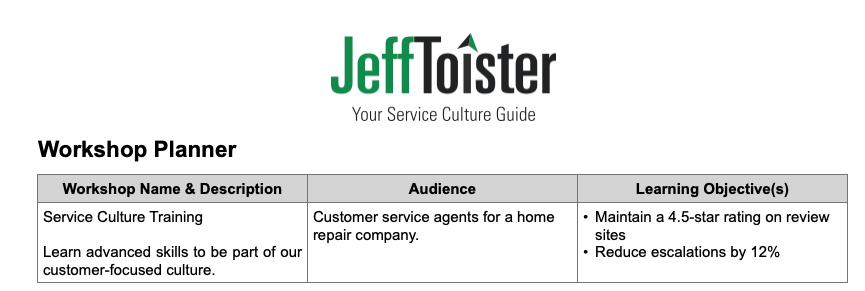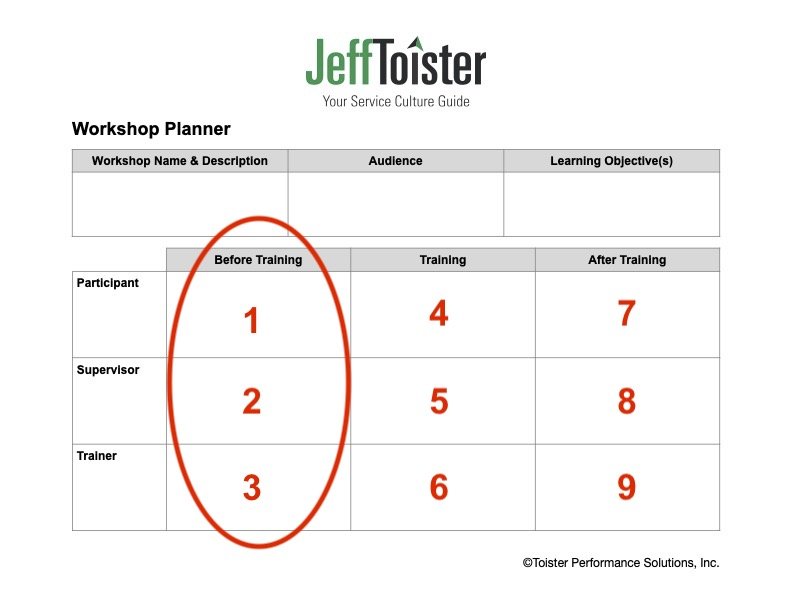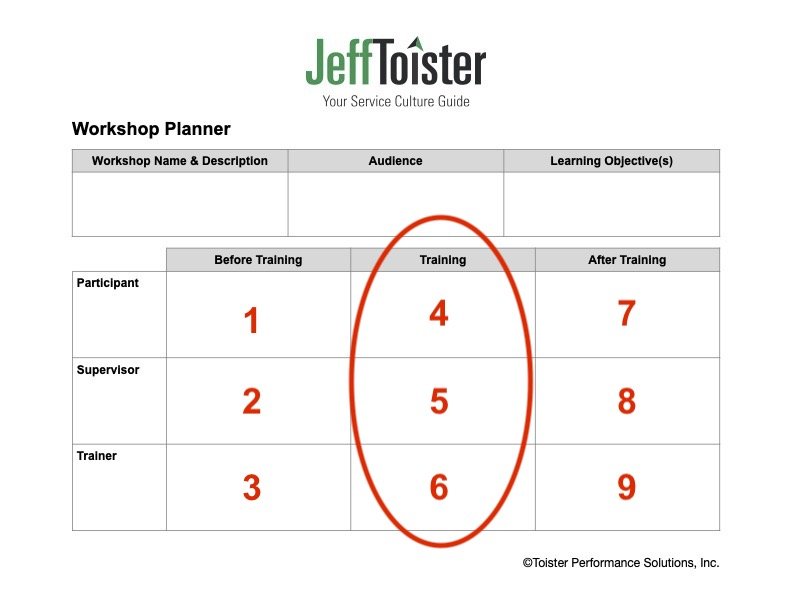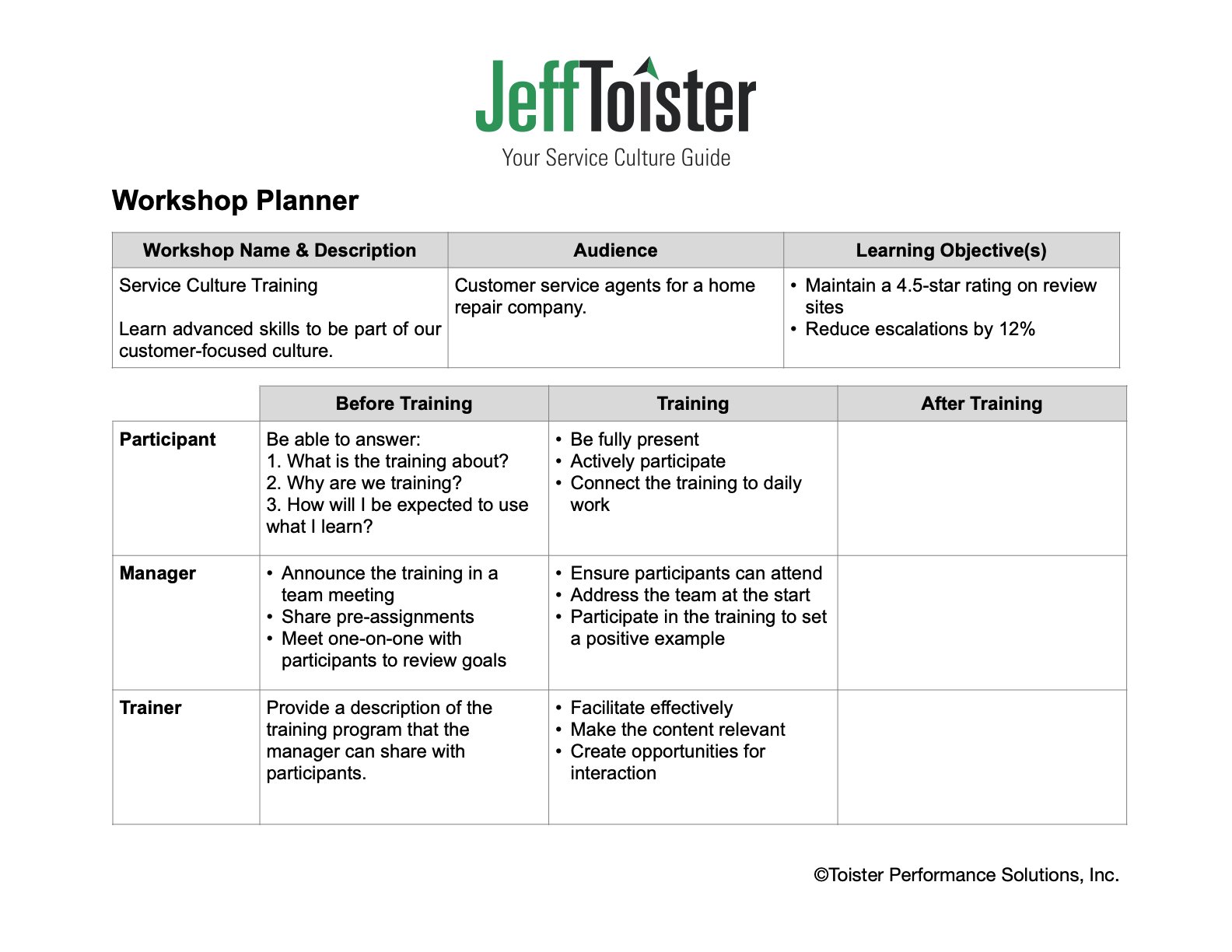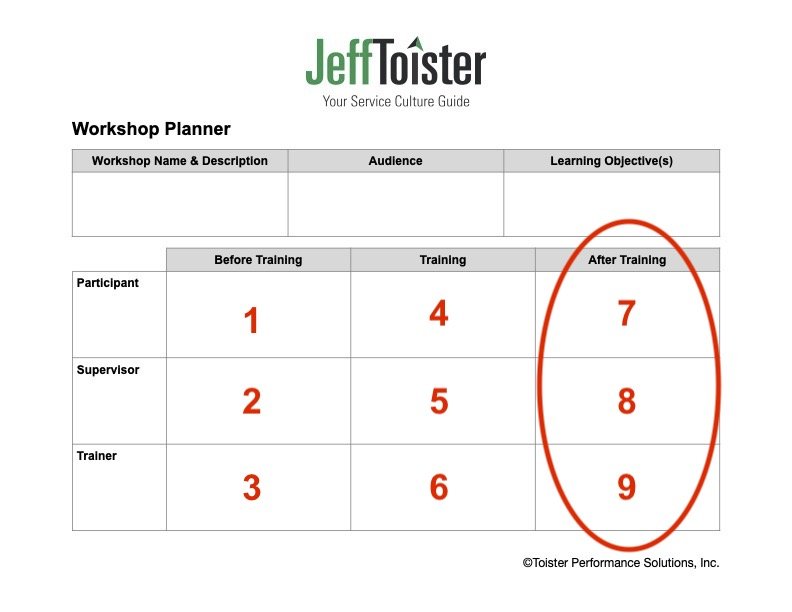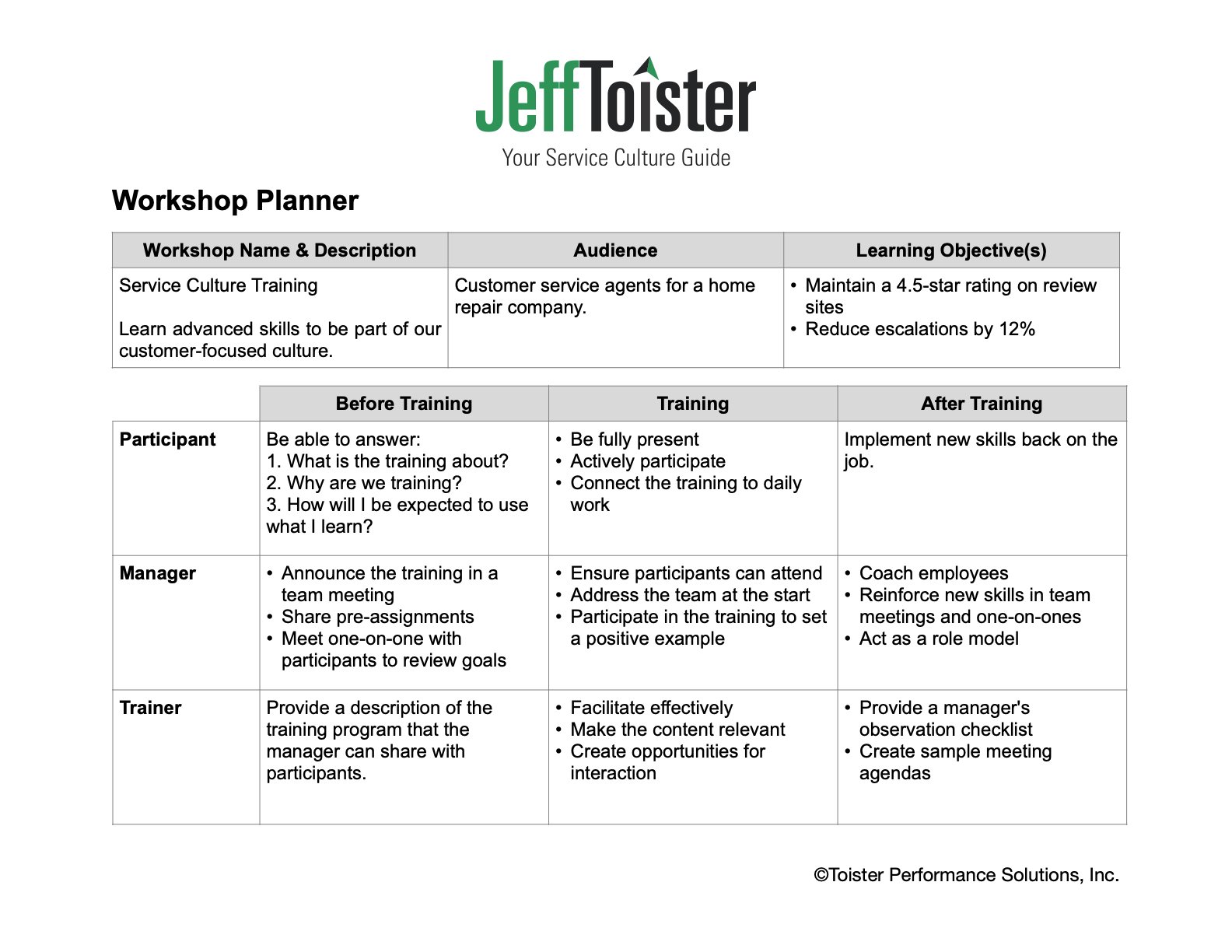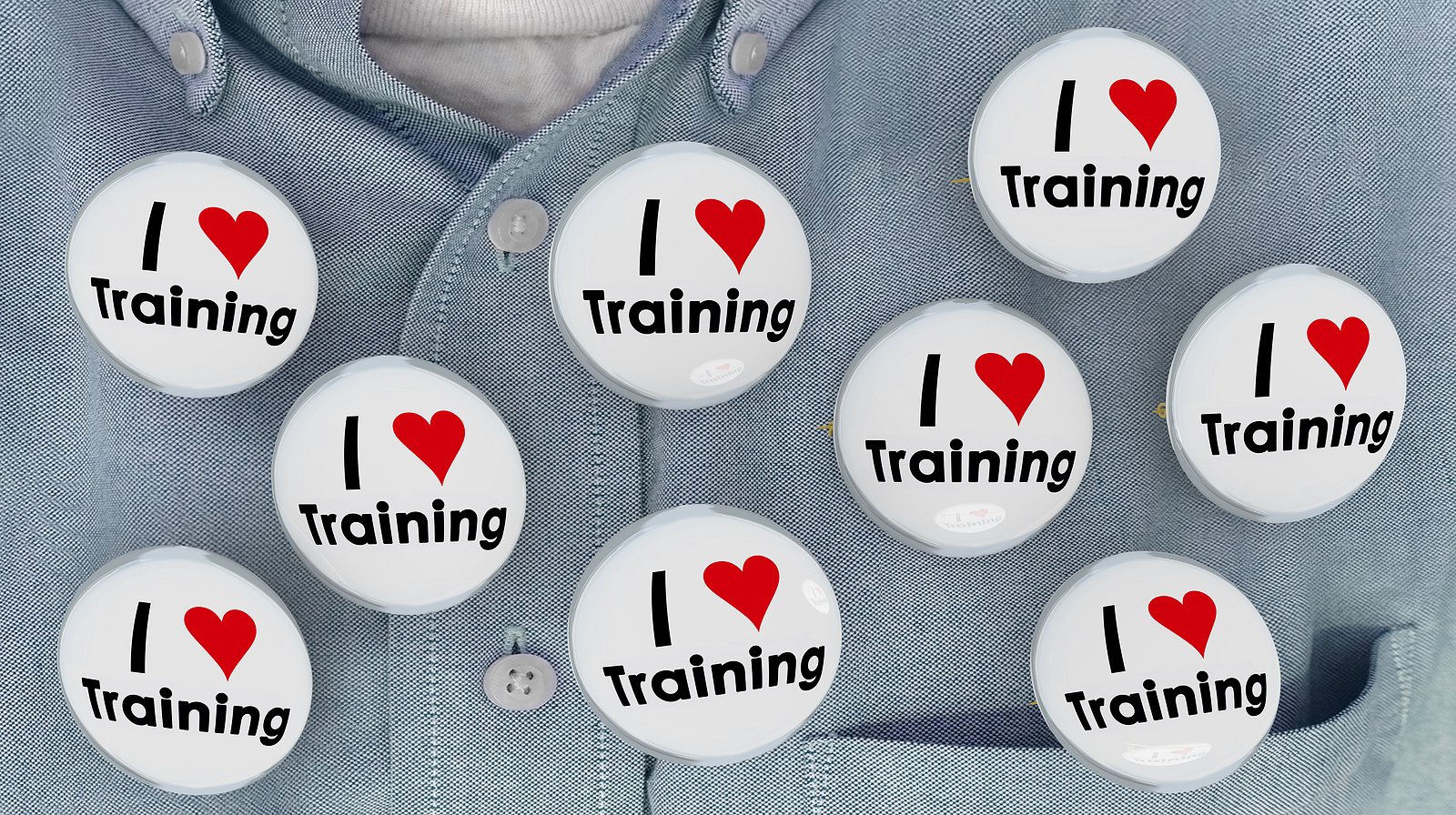Imagine a customer service training program for your team.
Most managers I talk to picture a big, annual program. It might be a formal class where everyone gathers for a half-day or a series of self-paced courses that take hours.
The all-at-once approach creates a lot of problems.
Low retention. Reps never remember all that's covered.
Too long. Full or half-day workshops disrupt your operation.
Bad timing. Employees don't get any training at all if they're out sick, on vacation, or hired after the annual program.
There’s a better way to do it.
The 5-5-5 approach helps you build your team’s skills by spending as little as 15 minutes per week developing your team.
The advantages of weekly training
The 5-5-5 training approach uses a weekly cadence to develop your team one skill at a time.
Weekly training is far more effective than a single annual course.
High retention. Employees learn and master one skill at a time.
No disruption. Short, weekly trainings won’t disrupt your operation.
Perfect timing. Ongoing training ensures no employee is left behind.
Imagine building one skill per week for an entire year. That's 52 opportunities to get better!
How the 5-5-5 approach works
The 5-5-5 training approach focuses on one skill per week. There are three steps that each take as little as five minutes.
This means you can deliver world-class training in just 15 minutes per week.
Step 1: Prep (5 minutes)
Take five minutes to plan one small, quick hit training. Focus on the smallest unit of skill possible, such as greeting customers.
Identify the topic
Create a five-minute lesson
You can subscribe to the Customer Service Tip of the Week to receive a weekly training tip to share with your team.
Some managers look for specific opportunities for improvement. For example, a contact center manager I know planned a weekly quick-hit training around reducing escalations.
Step 2: Deliver (5 minutes)
The next step is to deliver the training to your team. It should be short and sweet since you’re focusing on just one skill or technique.
Save time and minimize disruptions by incorporating the training into an existing team meeting or discussion. Some teams meet in person, others meet virtually, and a few that work different shifts engage in lively discussions via Slack or Teams.
You can use the Tell-Show-Do approach to deliver the training.
Tell: Explain the technique and why it’s important.
Show: Demonstrate the technique or share an example.
Do: Have employees go back to work and try the technique with customers.
Weekly training often feels informal.
The contact center leader shared the top escalations with the team. Everyone spent a few minutes brainstorming solutions that might prevent an escalation from occurring. The team quickly generated a list of techniques to try right away.
Step 3: Follow-up (5 minutes)
Follow-up with the team to check-in on your employees to see how they're doing. Offer coaching and encouragement to help them continue building and refining the skill.
That's it!
Conclusion
You can still do larger annual or semi-annual workshops to bookend these efforts. But the real learning happens in those weekly quick hits.
Use the 5-5-5 approach to do it weekly, one topic at a time.









